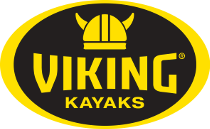Guide to kayak surf launch & Landing
3:55PM 26th Sep 13
In this How to Guide we share a recent blog post from Paddleguy.com where he has used our Profish 400 as the kayak to demonstrate a guide on Suf launching and landing... this is the full article and we recommend it as a good read for those of you wanting to tackle the surf. Whatever you do make sure you do it safely and stick within your limits. If you have any questions about surf, choosing the right gear or if your Viking Kayaks products are covered under warranty in surf environments please don't hesitate to contact us.
Guide to Launching & Landing your Fishing kayak in the surf
For some time now I have been requested to make a how-to video with some tips on surf launching and landing in sit on top kayaks (namely fishing kayaks). So I have put together this guide as part 1 of a series of these tips and advice. This version is one made for the guys at Viking Kayaks NZ using the Profish 400 lite which is a good example of today’s ocean-going rotomoulded fishing kayaks.
Who is this guide for?
Well if you’re a self-professed surf guru then read & watch no further as this guide is not for you, nor do I profess this to be the one-stop guide to surf, these are just some basic tips that I have learnt along the way. This is a guide to assist the kayak fisherman starting out or who have been launching off calm spots but want to tackle some more challenging locations for the fishing that awaits beyond the surf line.
A couple of initial points to note.
This is just a guide, nothing here can replace the skills and confidence you will gain by doing a course with a professional guide which is something I highly recommend you do. Or at least head out and practice with someone who has some experience, do not take on conditions that you are not qualified for as surf is not to be underestimated.
Also, make sure you are sticking within the warranty specification of your gear, a lot of equipment like paddles etc are not designed for surf work…it might pay to double-check with the manufacturer that you are using the right product for the job.
Covered in this video
- Launching What, Where & How
- Broaching, High brace vs Low brace
- Landing options 1,2,3 & 4
- 1 – Broaching and riding the wave in sideways
- 2 – Staying on the back of a wave
- 3 – come into beach backwards
- 4 – Riding the wave in straight
The biggest thing I recommend, other than a course, is taking your fishing kayak basic, no rods, no fishing gear… just a lifejacket, paddle (a leash is optional) a set of thigh braces is recommended for greater control (more on those in the video). Keep it simple and find out what both you and the kayak are capable of in the surf.
If you are launching for a fishing trip (after practising of course) make sure everything is cleared from the deck or strapped down. Remove lures from rods, re-rig these once through the surf. Viking kayaks have plenty of storage options so there is no need to have gear on the deck. Check all hatches are done up tight and in particular, check the bung if your kayak has one.
Choose sets carefully
Don’t just aimlessly set off through the waves, spend some time assessing the sets to get a feel for the peaks and troughs…you are going to try and time your launch with a trough, once you set off commit t every stroke, waves will wash over you and fill the cockpit with water making the kayak slow down or even stall. As long as you keep forward momentum the scupper holes will drain that water.
If you get your timing wrong and a wave looks to be picking up on you turn the kayak and get ready to brace & broach. This is covered in detail in the video…bracing and broaching are essential skills to use when learning and in fact I still rely on these as my first options when landing a fully loaded fishing kayak rather than trying to surf it back in.
Landing the kayak, 4 options
Same rules apply when coming back to the beach through the surf, clear the deck, secure everything and spend some time reading the sets before committing. Once you have chosen your set you have 4 options for landing safely. The common theme with any of the 4 options is know-how & when to brace, this is the strongest tool on your skills tackle box when taking on the surf in a Sit on Top kayak. As you will see described in detail a low brace is by far recommended over a high brace. Only use a high brace if you know what you’re doing.
Option 1 – Broaching and riding the wave in sideways
The first option and strongly suggested option for your learning is broaching, letting the wave push you to the beach sideways. You can achieve this by either partly riding the wave then turning left or right before bracing. Or paddle forward of the waves and turn full broadside waiting for the wave to hit you. The 2 keys to successful broaching are 1 – a strong low brace & 2 – lifting the leading edge to avoid it grabbing, thigh braces greatly assist this. Again this is explained better in the video
Option 2 - Staying on the back of a wave
Paddling back in on the back of the waves rather than the front can be a safer way to land. This does take some practice as it can turn bad quickly if you don’t know what to look out for…video explains this
Option 3 - come into beach backwards
This option sees you turning the kayak so you are facing the sets as they come through, in between sets you paddle backwards, as a wave approaches you paddle forward as per a launch, then repeat until you are safe enough to get off your kayak…
Option 4 - riding the wave front on
This can be fun but can also go wrong very quickly if you are not proficient at it in a variety of conditions. The fact that you are reading this would suggest maybe you know what I mean through your own experiences J practice practice practice is all I can say… this is so much about timing and feel that now words can really describe or instruct…you need to feel it when you get it right to know what you got wrong…again rely on broaching and bracing if you look to be getting it wrong.
To rudder or not to rudder?
I won’t go into too much detail here as there is mixed opinions, rudders can be very useful but equally can cause confusion and expense if damaged. If you have the option practice both with and without the rudder deployed, they are not essential in surf as a strong stern rudder and railing of the kayak can work equally as well as a rudder. However, these are skills that need practice and time to get right.
Note: I do not mention helmets here nor do I personally use them at my local surf beach. However, if I am heading the area known for big surf like the West Coast and areas that have a lot of rocks close to shore I will definitely consider wearing a helmet.
I hope this guide has been of use, I will say it again, practice, practice with a friend and only practice within your limits, surf is not to be underestimated as this environment can change so fast…. If I have not covered something you are interested to know email the team at Viking kayaks… and for the experts out there that have an opinion please keep it in context with the environment in which I am demonstrating and the target market for this video…





